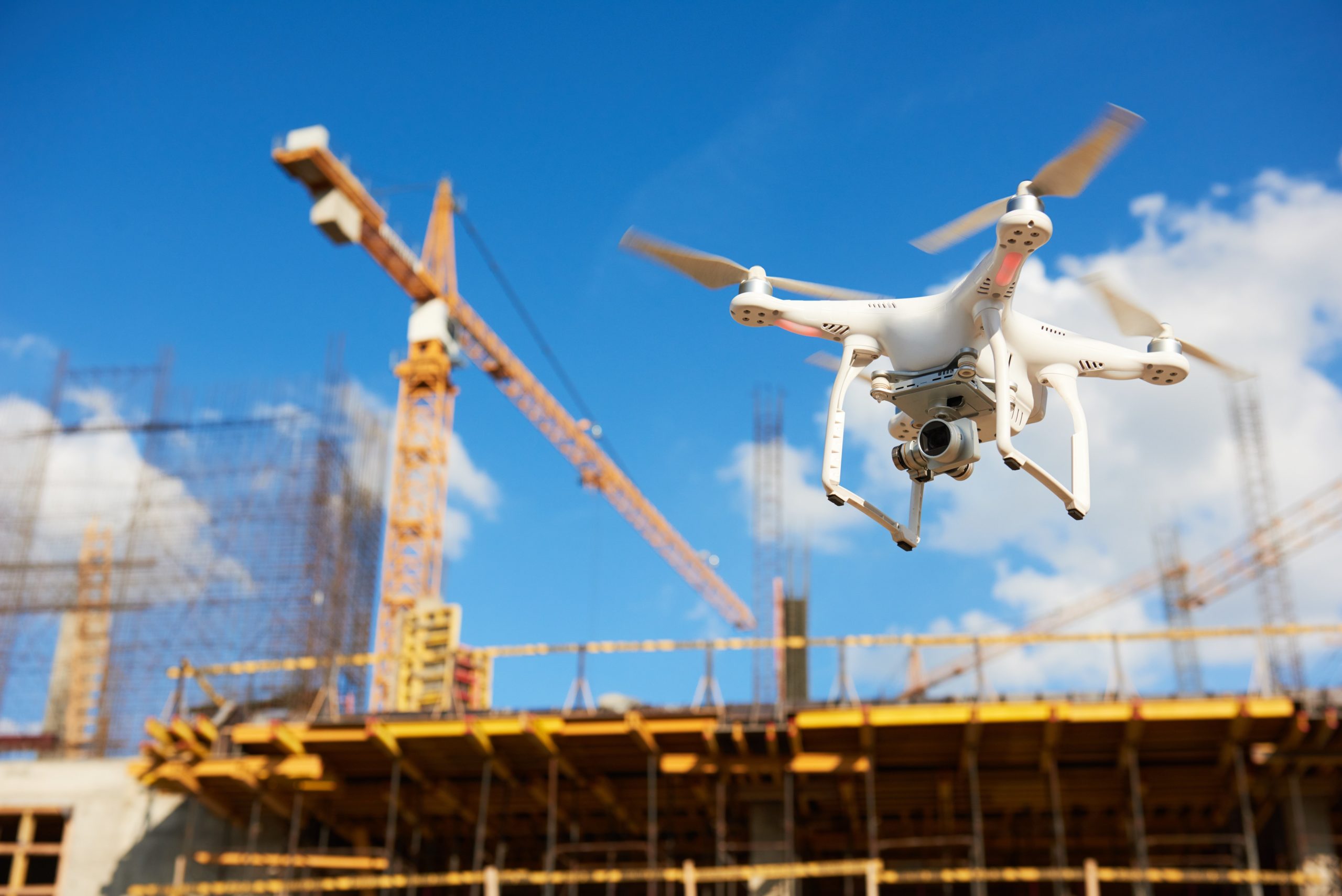Construction technologies are revolutionizing the construction industry, driving innovation and transforming project delivery. From cutting-edge building materials to advanced software tools, these technologies are enhancing efficiency, productivity, and safety, reshaping the landscape of construction.
This comprehensive guide delves into the latest advancements in construction technologies, exploring their types, benefits, and challenges. We’ll also showcase successful case studies and speculate on the future of this rapidly evolving field, providing valuable insights for professionals and enthusiasts alike.
Construction Technology Trends

The construction industry is undergoing a technological revolution, driven by advancements in automation, data analytics, and virtual reality. These technologies are transforming the way buildings are designed, constructed, and managed, leading to increased efficiency, productivity, and safety.
One of the most significant trends in construction technology is the rise of Building Information Modeling (BIM). BIM is a digital representation of a building that contains all the information needed to design, construct, and operate it. BIM allows architects, engineers, and contractors to collaborate more effectively, identify potential problems early in the design process, and reduce waste.
Emerging Technologies
- Artificial intelligence (AI)is being used to automate tasks such as design, scheduling, and project management. AI can also be used to analyze data and identify patterns that can help improve decision-making.
- Virtual reality (VR)is being used to create immersive experiences that allow users to visualize and interact with buildings before they are built. VR can also be used for training and safety simulations.
- Dronesare being used to inspect buildings, map construction sites, and deliver materials. Drones can also be used to create aerial photography and videography that can be used for marketing and documentation purposes.
Drivers of Technology Adoption
The adoption of construction technology is being driven by a number of factors, including:
- The need to improve productivity. The construction industry is facing a shortage of skilled workers, and technology can help to offset this by automating tasks and improving efficiency.
- The need to reduce costs. Technology can help to reduce costs by optimizing design, reducing waste, and improving project management.
- The need to improve safety. Technology can help to improve safety by identifying potential hazards, providing real-time information to workers, and automating dangerous tasks.
Challenges of Technology Adoption
While construction technology has the potential to transform the industry, there are also a number of challenges to its adoption, including:
- Cost. Technology can be expensive to purchase and implement.
- Training. Workers need to be trained on how to use new technologies, which can be time-consuming and costly.
- Resistance to change. Some workers may be resistant to change and may not be willing to adopt new technologies.
Types of Construction Technologies

Construction technologies encompass a wide range of advancements that enhance the efficiency, productivity, and sustainability of construction projects. These technologies can be categorized based on their functions and applications, such as:
Building Information Modeling (BIM)
- BIM integrates digital representations of building components, allowing for collaboration and visualization throughout the construction process.
- Benefits include improved coordination, reduced errors, and enhanced project management.
Construction Robotics
- Robots perform repetitive or hazardous tasks, such as welding, bricklaying, and painting.
- They increase productivity, improve accuracy, and reduce labor costs.
3D Printing in Construction
- 3D printers create building components and structures layer by layer using concrete or other materials.
- Advantages include faster construction times, reduced waste, and increased design flexibility.
Prefabrication and Modular Construction
- Building components are manufactured off-site and assembled on-site, reducing construction time and costs.
- Prefabs offer greater quality control and sustainability.
Sustainable Construction Technologies
- These technologies focus on reducing environmental impact and promoting resource efficiency.
- Examples include green building materials, renewable energy systems, and water conservation measures.
Construction Management Software
- Software tools for planning, scheduling, budgeting, and document management.
- They streamline project management, improve communication, and enhance decision-making.
Comparison of Construction Technology Types
| Technology | Function | Benefits |
|---|---|---|
| BIM | Digital representation of building components | Improved coordination, reduced errors |
| Construction Robotics | Automation of tasks | Increased productivity, improved accuracy |
| 3D Printing in Construction | Creation of building components using 3D printing | Faster construction times, reduced waste |
| Prefabrication and Modular Construction | Off-site manufacturing and on-site assembly | Reduced construction time and costs |
| Sustainable Construction Technologies | Environmental impact reduction and resource efficiency | Improved sustainability, reduced operating costs |
| Construction Management Software | Project management and documentation | Streamlined project management, improved communication |
Benefits of Construction Technologies

Construction technologies offer numerous advantages that enhance the efficiency, productivity, and safety of construction projects. These technologies streamline processes, reduce costs, and improve overall project outcomes.
By leveraging technologies such as Building Information Modeling (BIM), project management software, and drones, construction companies can:
Enhanced Efficiency and Productivity
- Automate repetitive tasks, freeing up time for more complex activities.
- Improve coordination and communication among project stakeholders.
- Optimize resource allocation and reduce waste.
- Enhance collaboration and knowledge sharing.
Improved Safety
- Reduce accidents and injuries by providing real-time monitoring and alerts.
- Identify and mitigate hazards before they become a threat.
- Create safer working conditions for construction personnel.
Cost and Time Savings, Construction technologies
- Reduce material waste and optimize material usage.
- Accelerate project timelines by streamlining processes.
- Lower labor costs by automating tasks and increasing productivity.
- Quantify the cost and time savings associated with technology adoption.
Studies have shown that construction companies that adopt technology can experience significant cost and time savings. For example, a study by McKinsey & Company found that using BIM can reduce project costs by up to 20% and shorten project timelines by up to 10%.
Challenges of Construction Technologies
Construction technologies bring numerous advantages, but their implementation also poses certain challenges that need to be addressed. These challenges include cost implications, training requirements, and interoperability issues.
Cost
The adoption of construction technologies can involve significant upfront costs. These costs may include the purchase or rental of equipment, software licenses, and training for staff. Additionally, ongoing maintenance and support costs need to be considered.
Training
Construction technologies often require specialized knowledge and skills to operate and maintain. This necessitates comprehensive training programs for staff to ensure they can effectively utilize the technology. Training can be time-consuming and may disrupt ongoing projects.
Interoperability
Different construction technologies may not always be compatible with each other, leading to interoperability issues. This can hinder data sharing and collaboration between different systems and software applications. Lack of interoperability can result in inefficiencies and delays in project execution.
Overcoming these challenges requires a strategic approach. Construction companies should carefully evaluate the costs and benefits of implementing construction technologies and allocate sufficient resources for training and support. They should also seek out technologies that are interoperable and compatible with their existing systems.
Case Studies of Successful Technology Implementations
In the construction industry, embracing technology has led to numerous successful implementations that have transformed project outcomes. Here are some notable case studies that showcase the impact of technology in construction:
BIM (Building Information Modeling) for Project Collaboration
- Project:Dubai International Airport Expansion
- Technology Used:BIM (Revit, Navisworks)
- Impact:BIM enabled seamless collaboration between architects, engineers, and contractors, reducing coordination issues and enhancing design accuracy. It also facilitated clash detection and resolution before construction, resulting in a 30% reduction in rework.
Robotics for Repetitive Tasks
- Project:Singapore Sports Hub
- Technology Used:Robotic arms (ABB IRB 6660)
- Impact:Robotic arms were employed for repetitive tasks such as welding and assembly, increasing productivity by 50% and reducing labor costs by 20%. The high precision of the robots also ensured consistent quality and reduced errors.
Drones for Site Monitoring and Inspection
- Project:Golden Gate Bridge Rehabilitation
- Technology Used:Drones (DJI Phantom 4 Pro)
- Impact:Drones provided real-time aerial footage and 3D models of the bridge, allowing for detailed inspection and monitoring. This facilitated timely detection of potential issues and enabled proactive maintenance, reducing downtime and ensuring safety.
Virtual Reality (VR) for Design Visualization and Collaboration
- Project:Burj Khalifa
- Technology Used:VR (Oculus Rift)
- Impact:VR allowed architects and engineers to experience the building design in a virtual environment, enabling immersive visualization and collaboration. This enhanced design decision-making and reduced the need for physical mockups, saving time and resources.
Prefabrication for Efficient Construction
- Project:Google’s Mountain View Campus
- Technology Used:Prefabricated modules
- Impact:Prefabrication enabled the construction of modular units off-site, which were then assembled on-site. This streamlined the construction process, reduced waste, and improved quality control. The project was completed 20% faster and with a 15% cost reduction.
Future of Construction Technologies
The construction industry is on the cusp of a technological revolution. Advancements in artificial intelligence (AI), robotics, and virtual reality (VR) are poised to transform the way buildings are designed, constructed, and managed.These technologies have the potential to improve efficiency, reduce costs, and enhance safety on construction sites.
For example, AI can be used to automate repetitive tasks, such as scheduling and project management. Robotics can be used to perform dangerous tasks, such as working at heights or in confined spaces. And VR can be used to create immersive training simulations that help workers learn new skills safely and efficiently.In addition to these specific technologies, the future of construction is likely to be characterized by a greater emphasis on sustainability and resilience.
Buildings will be designed and constructed to be more energy-efficient and environmentally friendly. They will also be built to withstand the effects of climate change, such as rising sea levels and extreme weather events.The future of construction technologies is bright.
These technologies have the potential to make the industry more efficient, productive, and sustainable. However, it is important to note that these technologies also come with challenges. One challenge is the cost of implementing these technologies. Another challenge is the need to train workers on how to use these technologies.Despite these challenges, the future of construction technologies is promising.
These technologies have the potential to revolutionize the industry and make it more efficient, productive, and sustainable.
Opportunities for Further Research and Development
There are a number of opportunities for further research and development in construction technologies. One area of research is the development of new AI algorithms that can be used to automate more complex tasks on construction sites. Another area of research is the development of new robotic systems that can perform a wider range of tasks.
Finally, there is a need for research on how to integrate these technologies into the construction process in a way that is safe and efficient.By investing in research and development, the construction industry can ensure that it is well-positioned to take advantage of the opportunities that these technologies offer.
Final Summary: Construction Technologies
As the construction industry embraces the transformative power of technology, we stand on the cusp of an exciting era. Construction technologies have the potential to revolutionize every aspect of project delivery, from planning and design to construction and maintenance. By embracing innovation and overcoming challenges, we can harness the full potential of these technologies to build a more sustainable, efficient, and resilient built environment.
Question & Answer Hub
What are the key benefits of using construction technologies?
Construction technologies offer numerous benefits, including increased efficiency, improved productivity, enhanced safety, reduced costs, and better quality control.
What are the challenges associated with implementing construction technologies?
Challenges include cost, training requirements, interoperability issues, and resistance to change. However, with proper planning and support, these challenges can be overcome.
What is the future of construction technologies?
The future of construction technologies is bright, with advancements in areas such as artificial intelligence, robotics, and sustainable materials. These technologies will continue to transform the industry, leading to even greater efficiency, productivity, and innovation.
 wohnroom.biz.id BUSINESS INVENTORY
wohnroom.biz.id BUSINESS INVENTORY